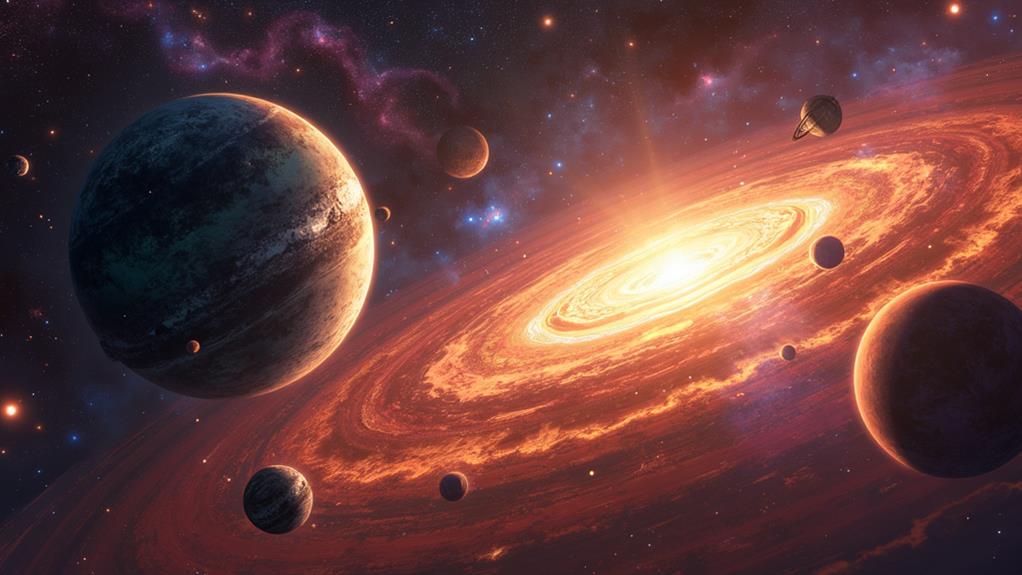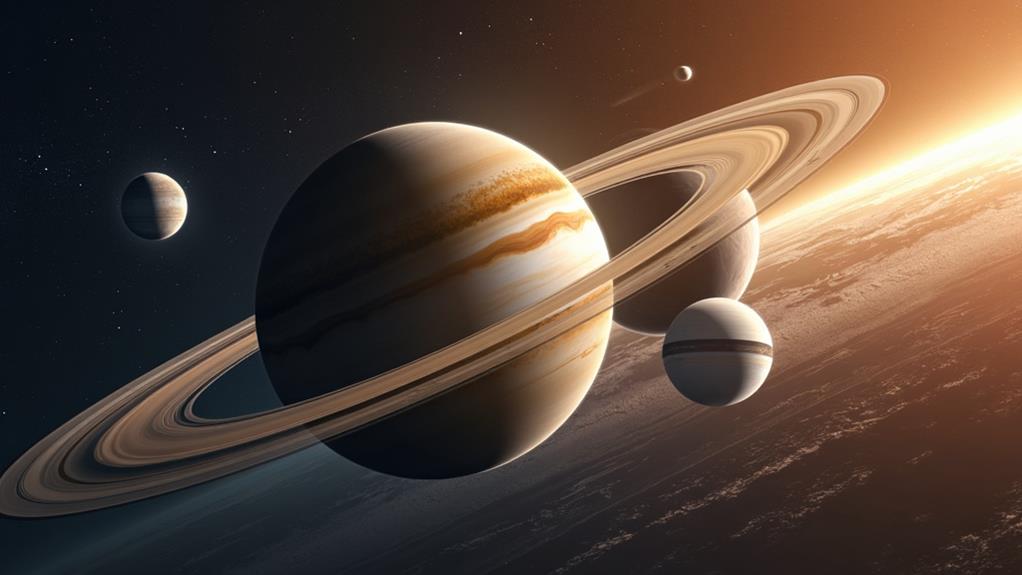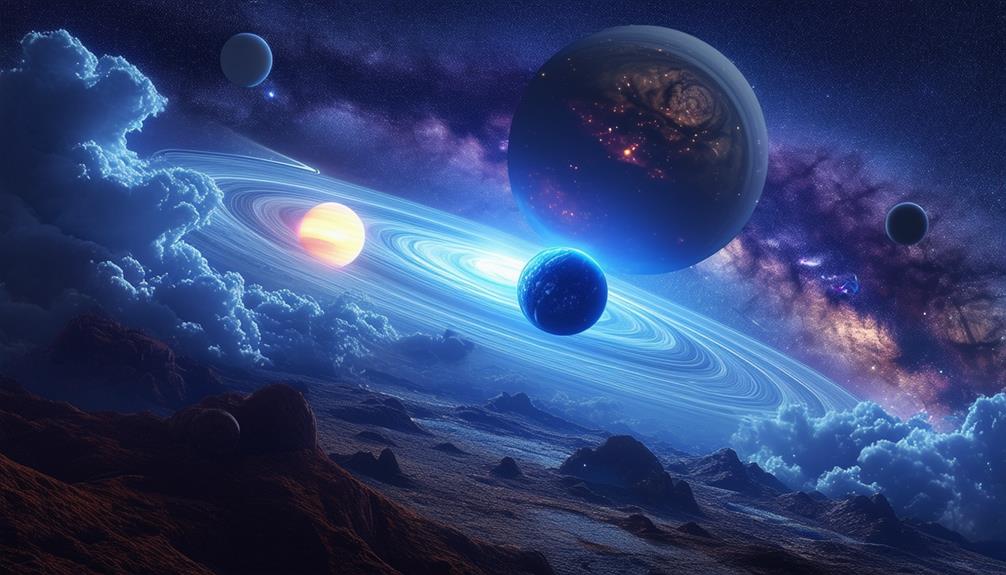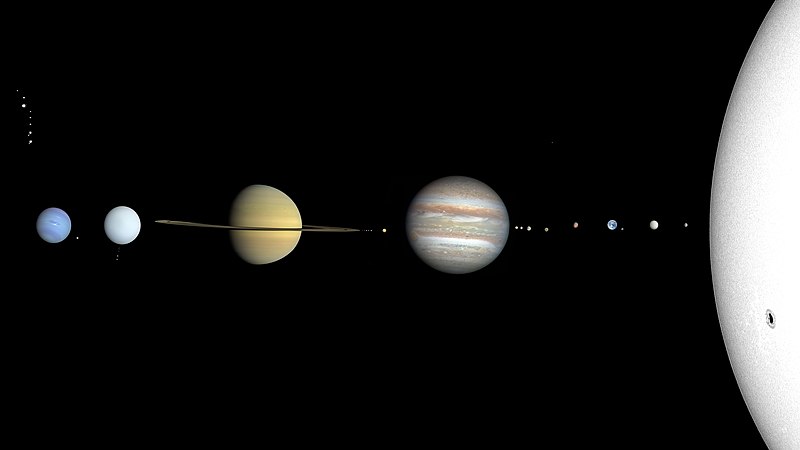The Fascinating World of Diamond Planets: Exploring Carbon-Rich Exoplanets

Some exoplanets are rich in carbon, leading to the formation of diamonds beneath their harsh surfaces. These carbon-rich worlds, with extreme atmospheres and unique compositions, challenge our understanding of habitability in the universe. Researchers use cutting-edge techniques to study these distant bodies, uncovering secrets about planetary evolution that could reshape our ideas of life in extreme environments. What does this mean for our search for extraterrestrial life? The implications of these findings are profound and could surprise you.
Exoplanet Composition and Characteristics
Exploring exoplanet composition reveals that carbon-rich worlds may contain significant quantities of diamonds and silicon carbide, formed under extreme conditions distinct from those in our solar system. These exoplanets often possess a high carbon-to-oxygen ratio, promoting the formation of diamond and silicon carbide under intense pressure. The geological activity on these planets—or lack thereof—plays a crucial role in shaping their atmospheric conditions.
Water presence is critical for diamond formation, acting as a catalyst in the process. Without sufficient geological activity, carbon-rich exoplanets might develop inhospitable atmospheres, limiting their potential to support life within the habitable zone. Unlike Earth, which contains only about 0.001% diamonds, these distant worlds could have considerably higher concentrations, making them intriguing study targets.
Understanding the composition of these exoplanets not only reveals the types of materials present but also provides insights into their evolutionary differences from Earth. By examining the interplay of carbon, water, and high-pressure environments, we gain valuable knowledge about the diverse nature of exoplanetary systems beyond our solar neighborhood.
Research Techniques for Diamond Formation

Investigating diamond formation relies heavily on high-pressure simulations to replicate the extreme conditions found on carbon-rich exoplanets. Researchers employ laser heating techniques to elevate temperatures during these experiments, facilitating the chemical reactions necessary for diamond production. These methods enhance our understanding of diamond formation and offer valuable insights into the processes occurring on diamond-rich exoplanets.
High-Pressure Simulations
High-pressure diamond-anvil cells simulate the extreme conditions found in carbon-rich exoplanets, enabling researchers to study diamond formation. These innovative devices compress materials like silicon carbide under high pressure, often in water, to replicate the necessary conditions. Here are four key aspects of this process:
- High-Pressure Conditions: Scientists recreate environments akin to those deep within exoplanets.
- Silicon Carbide: This compound is crucial in experiments, acting as a precursor to diamonds.
- Chemical Reactions: Under specific conditions, reactions between silicon carbide and water can yield diamonds and silica.
- Mineral Analysis: X-ray measurements monitor these chemical reactions, allowing researchers to verify diamond formation.
Laser Heating Techniques
Laser heating techniques are essential for replicating the extreme temperatures necessary to transform silicon carbide into diamonds, akin to conditions on carbon-rich exoplanets. Your experiments leverage lasers to achieve the high temperatures that trigger chemical reactions between silicon carbide and water under high pressure.
To simulate these high-pressure environments, you use diamond-anvil cells, enabling precise replication of potential diamond-rich exoplanetary conditions. The intense laser heating not only drives the conversion of silicon carbide into diamonds but also provides valuable data on diamond formation in extraterrestrial settings.
Throughout these experiments, you employ X-ray measurements to monitor sample changes, offering crucial insights into reaction kinetics and product formation. This enhances your understanding of planetary compositions. Mastering these laser heating techniques helps unravel the mysteries of diamond formation and contributes to exploring unique mineral properties in diverse exoplanetary environments. Your research could yield groundbreaking insights into the nature of these fascinating worlds.
Habitability and Atmospheric Conditions

Carbon-rich exoplanets often exhibit atmospheric conditions that render them unsuitable for supporting life as we know it. Their geological inactivity significantly impairs the creation and maintenance of a life-supporting atmosphere. Here are four critical factors to consider:
- Lack of Liquid Water: Liquid water, essential for life, is frequently absent on these planets.
- Toxic Gases: These atmospheres are dominated by high concentrations of toxic gases, creating a hostile environment.
- Absence of Geological Activity: The lack of plate tectonics or volcanic activity means these planets cannot stabilize their atmospheres.
- Inhospitable Atmospheric Conditions: The atmospheric composition fails to provide the balanced mixture of gases required for habitability.
Unlike Earth, where geological processes help maintain a dynamic and life-supporting atmosphere, carbon-rich exoplanets display characteristics that lead to extreme and inhospitable conditions for life as we understand it. While the concept of diamond planets is fascinating, their potential to support life remains highly unlikely.
Unique Exoplanet Types and Diversity

Investigating the universe of exoplanets reveals fascinating types like carbon-rich planets, which may be abundant in diamonds. Additionally, rogue planets, which drift alone in space, highlight the incredible diversity of planetary formations. These unique characteristics deepen our understanding of the vast and varied nature of celestial bodies beyond our solar system.
Carbon-Rich Planet Characteristics
Carbon-rich exoplanets, known for their unique compositions of diamonds and silica, exhibit several intriguing characteristics that differentiate them from Earth-like planets:
- High Carbon-to-Oxygen Ratio: These planets often possess a high carbon-to-oxygen ratio, which is conducive to diamond formation.
- Extreme Conditions: The high pressure and heat prevalent on these planets facilitate the formation of diamonds.
- Silicon Carbide Presence: Silicon carbide, abundant on these exoplanets, can convert into diamonds, contributing to their diamond-rich nature.
- Inhospitable Environments: The extreme atmospheric conditions and lack of geological activity make these planets unlikely to support life.
While the presence of diamonds is fascinating, the inhospitable conditions render these exoplanets unwelcoming. Understanding carbon-rich worlds expands our knowledge of planetary diversity and challenges our concepts of habitability in the universe. Researchers and enthusiasts continue to be intrigued by the unique characteristics of these exoplanets.
Rogue Planets and Diversity
Rogue planets, drifting through the cosmos without the gravitational pull of a star, display a remarkable diversity that challenges our understanding of planetary formation and characteristics. These free-floating exoplanets, detected primarily through microlensing techniques, vary significantly in size and composition. Some may resemble carbon-rich planets, while others could possess unique geological features or atmospheric conditions.
The presence of rogue planets indicates that not all planets form within a solar system's protoplanetary disk. This revelation opens up intriguing possibilities about their formation processes and the diverse environments they may inhabit. Depending on their distance from their original stars and the conditions experienced in their stellar environments, these celestial bodies might exhibit extreme characteristics, such as icy surfaces or dense atmospheres.
Recent research suggests that rogue planets could outnumber stars in the Milky Way, underscoring the vast array of planetary types within our galaxy. Studying these rogue planets not only enhances our understanding of planetary formation but also expands our perspective on the potential for life in unexpected places. Continuing to explore this fascinating diversity is crucial for unlocking the mysteries of our universe.
Unique Formation Processes
The distinctive characteristics of exoplanets emerge from unique formation processes that shape their composition and potential environments. Understanding these processes enhances our appreciation of the diversity of planetary systems in our universe. Here are four intriguing aspects of carbon-rich exoplanets:
- High Carbon-to-Oxygen Ratios: These planets form in environments with elevated carbon levels relative to oxygen, leading to interiors rich in diamond.
- Silicon Carbide Transformation: Under extreme conditions, silicon carbide can convert into diamonds and silica, further enriching the planet's composition.
- Geological Activity: While some carbon-rich exoplanets may exhibit geological processes, they often lack the conditions necessary to support life.
- Host Star Influence: The elemental makeup of exoplanets mirrors that of their host stars; higher carbon-to-oxygen ratios in stars increase the likelihood of forming carbon-rich planets.
These unique formation processes highlight the fascinating diversity of exoplanets. While diamond-rich worlds are captivating, their inhospitable atmospheres and limited geological activity make them unlikely candidates for harboring life. Exploring these extreme conditions deepens our understanding of the universe's complexity.
Implications of Diamond Planet Research

Research into diamond planets not only unveils their unique compositions but also prompts questions about their potential to host life and their significance in understanding planetary evolution. Carbon-rich exoplanets, formed in environments with high carbon-to-oxygen ratios, might contain substantial amounts of diamond and silica. Despite their allure, these diamond-rich planets are often predicted to be inhospitable to life due to a lack of geological activity, which is crucial for maintaining stable atmospheres.
The transformation of carbon into diamonds is closely tied to the presence of water and high pressure, highlighting the complex interplay of geological and atmospheric conditions. Laboratory experiments suggest that silicon carbide can convert into diamonds under extreme conditions, indicating diverse processes on these exoplanets.
As research progresses, findings will enhance our interpretation of data from upcoming missions like the James Webb Space Telescope. Studying these carbon-rich exoplanets will deepen our understanding of planetary formation and evolution, broadening our knowledge of potential life beyond our solar system.
Future Directions in Exoplanet Studies
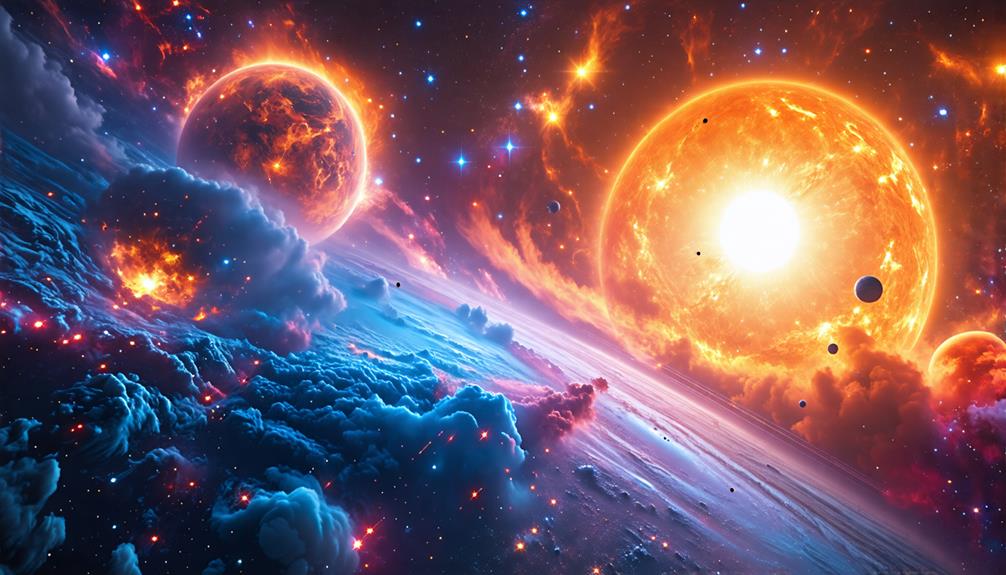
Research into exoplanets is poised to advance significantly as upcoming missions gather crucial data on the unique properties and geological activities of carbon-rich worlds. Key areas of focus in this evolving field include:
- Diamond-rich Exoplanets: Studying their formation and composition promises to unveil new insights into planetary evolution and differentiation.
- Habitability Conditions: Understanding the atmospheres and geological activities that sustain stable environments is essential for assessing the potential for life.
- James Webb Space Telescope: This state-of-the-art instrument will provide in-depth analyses of exoplanet atmospheres, enhancing our ability to detect life-sustaining conditions.
- Nancy Grace Roman Space Telescope: Its mission will extend our understanding of distant worlds, focusing on their potential to host life and their geological characteristics.
Future research will explore how carbon-rich exoplanets differ from familiar celestial bodies in our solar system. Collaborations with institutions such as Arizona State University and the University of Chicago aim to identify the atmospheric conditions necessary for sustaining life. These findings will deepen our appreciation for the diverse range of exoplanets and their implications for understanding life beyond Earth.
Conclusion
Exploring the captivating realm of diamond planets reveals carbon-rich worlds that challenge traditional notions of habitability. Research into these unique exoplanets uncovers their intriguing properties and pushes the boundaries of our understanding of life in extreme environments. Advances in technology and missions, such as the James Webb Space Telescope, offer a tantalizing glimpse into the diverse possibilities that exist beyond our solar system.

